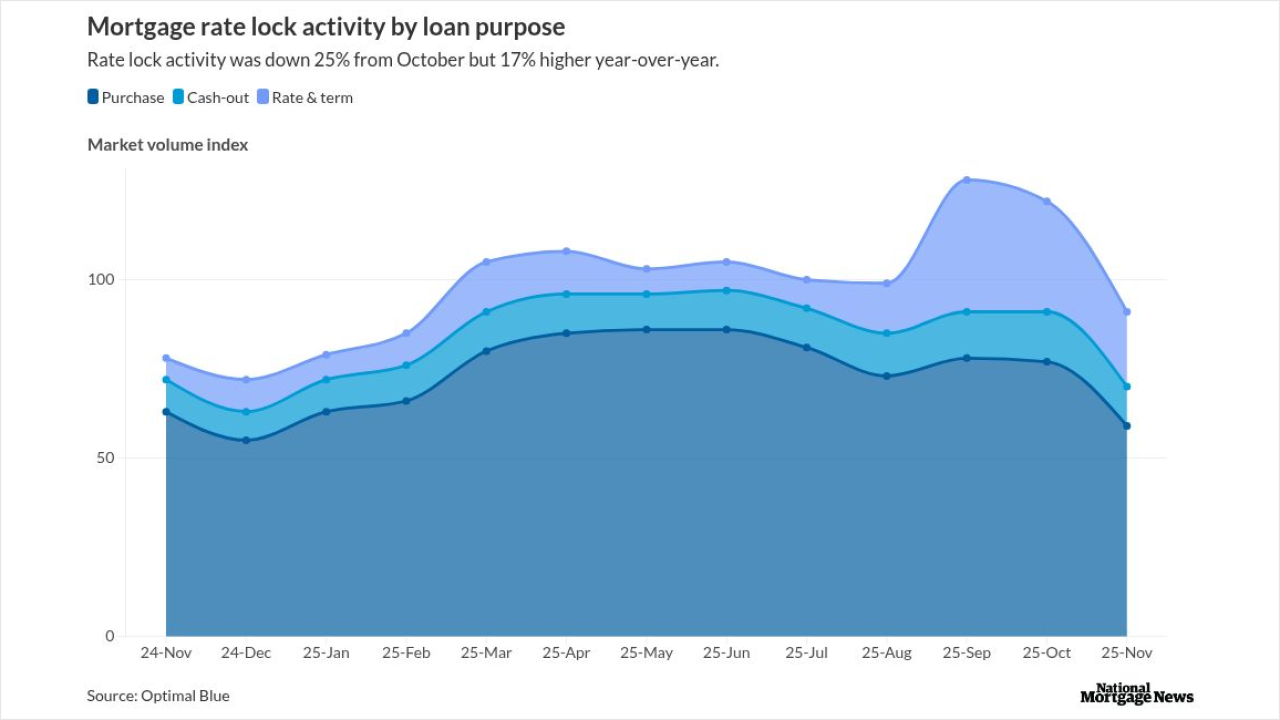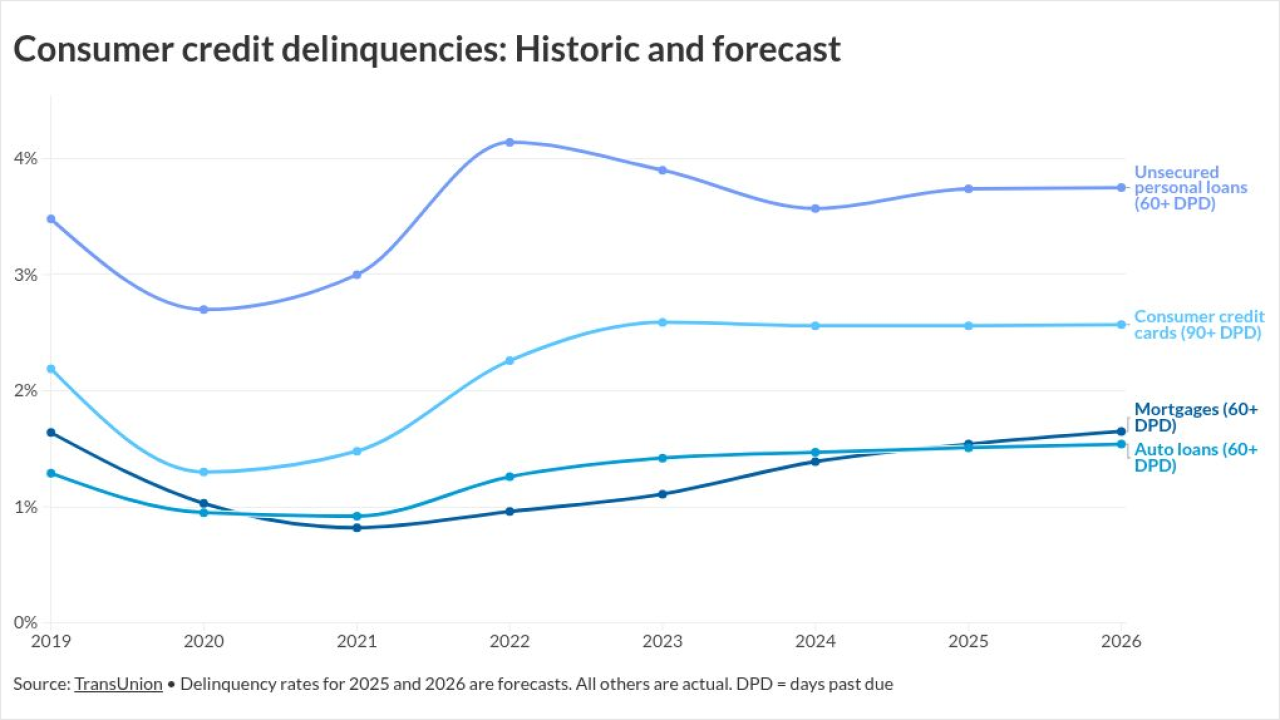
Stakeholders acknowledge that they do look likely to meet the goal of helping lower-income borrowers get better pricing for their loans while partially offsetting that with higher fees for certain other mortgages serving borrowers who make more.
"I think their intentions were definitely good," said David Battany, executive vice president, capital markets at Guild Mortgage. He noted that some of the new distinctions could be helpful.
Pricing by loan type, for example, could account for the fact that purchase loans do cost more to originate than refinances. The change may discourage excessive prepayments while still giving borrowers a chance to save when rates fall.
"If the price delta between a purchase and a refinance looks to be very similar to the amount of extra work to originate a purchase loan, that means if rates are flat, you don't have churning-type refinancing, but if rates do drop, you're not preventing it," he said.
However, Battany agrees with some trade groups who argue that the new distinctions could also create challenges in pricing and marketing loans.
"The granularity is excessive and it's also confusing," said Bob Broeksmit, president and CEO of the Mortgage Bankers Association. "If you ask me to explain to a borrower why his price differs from his neighbor's price, it's just really hard to do."
Debt-to-income ratio-based pricing complications
"You don't know the DTI until the final approval and even then it can change before closing," said Broeksmit. "The DTI is wrong the day after you measure it if you make a payment on your credit card, your minimum payment changes, or you get a raise at work."
Battany added that "that could be a headache because a borrower wants a rate quote, and the loan price adjustments are part of the quote to the borrower."
The industry has pushed back against the use of DTI in policy before, Broeksmit noted.
"It's no longer in the [
The government-sponsored enterprises' regulator and conservator, the Federal Housing Finance Agency, has made a point of noting that if borrowers meet other affordability criteria such as certain income limits, they won't be charged DTI-related fees.
However, the FHFA and its charges have not fully restored area median income limits to higher levels they were at prior to a decision made under the previous administration to lower them, Broeksmit noted.
The grids show that if mortgages with debt-to-income ratios over 40% don't qualify for breaks on fees due to other affordability measures, they will be subject to less advantageous pricing, Isaac Boltansky and Isabel Bandoroff, researchers at financial services firm BTIG, said in a report.
"These changes should have an outsized benefit for [low- to moderate-income] borrowers. To that end, we view the release as directionally positive for private mortgage insurers, lower price-point builders, and manufactured housing," the BTIG analysts said.
The trade group U.S. Mortgage Insurers, a.k.a. USMI, said that overall the new grids "will have a positive impact," but noted that it was continuing to analyze the pricing changes and did not immediately have a more detailed take on them.
Since mortgage insurers' role is to cover risk for borrowers with lower down payments, they are likely to focus on the loan-to-value ratio-related pricing changes in the grid in their review.
The BTIG analysis suggests that the new pricing plan slated to go into effect in May has a mixed impact for these ratios, with well over 30 LTV-related squares on the grid representing decreased fees, and a little over 20 designating higher ones.
The knock-on effect to the FHA
The mortgage industry and the GSEs have historically added fees for these loans since a low credit score indicates higher the risk of delinquent payments. Also, lower down payments are considered to reduce a borrower's incentive to repay.
Fannie, Freddie and the FHFA are experimenting with cutting some fees for loans in this category likely because of affordable and
But that move could serve to redistribute the number of borrowers who get those loans versus the mortgages secured by the Federal Housing Administration. Due to a combination of pricing and underwriting parameters, FHA generally has reached further down the credit and income spectrum than Fannie and Freddie.
Broeksmit has shown some concern about adverse selection affecting the FHA's government-insured book of business, as has the Community Home Lenders of America, but not everyone agrees that'll be the outcome.
The risk to the FHA could be mitigated by a premium cut the industry has heavily lobbied for and could be justified given
"An FHA fee cut would complement this action on GSE pricing, avoid any unintended consequences of FHA adverse selection, and further an agenda of equitable housing and access to mortgage credit," Olson said.
What the shift in FHA's, Fannie's and Freddie's books of business will be like ultimately remains to be seen.
The net impact to borrowers
In particular, the current grid has "pretty high fees for second homes or investor property," Walt Schmidt, senior vice president, mortgage strategies, at FHN, said in an interview.
The MBA has estimated that the net impact on fees overall represents a modest increase.
That could weigh on lenders
"If the conservator believes that the GSEs are underpricing loans, a very modest, across-the-board guarantee fee increase would be preferable to overly complex and difficult-to-implement changes here," Broeksmit said.
Even more changes may be on the way given that the FHFA is considering amending the capital rule that governs the financial buffers Fannie and Freddie must have.
Potentially problematic uniform mortgage-backed securities pricing
"The FHFA estimates that it will release a proposal in February 2023. Our sense is that the core of the capital rule will remain unchanged, but there are a number of areas that are ripe for modest tweaks," the BTIG researchers said. "For example, we will be focused on the potential for a change to certain risk weights which ultimately led to the imposition of the fee on commingled UMBS."
The agency has just announced that it'll be dramatically lowering this fee in April to 9.375 basis points from 50, but some stakeholders would still like to see it removed altogether because it undermines the goal of having uniform securities that are supposed to be considered interchangeable. The UMBS was created to remove Freddie's weaker securities position relative to Fannie's, and the 50 basis points fee has been charged since last summer on that basis.
That fee anecdotally does appear to have contributed to declining use of the commingled securities structure, but relatively higher interest rates have been a disincentive to use it as well, said Schmidt. Commingling involves the combination of Fannie and Freddie securities into larger structures, and that's more likely to occur when lower rates encourage refinancing and outstanding securitized loan pools are shrinking more quickly as a result.
"I think the bottom line is the fee goes against the spirit of a single security and fungibility, and it remains to be seen whether commingling of securities will resume now that the fee has been reduced," Schmidt said.





